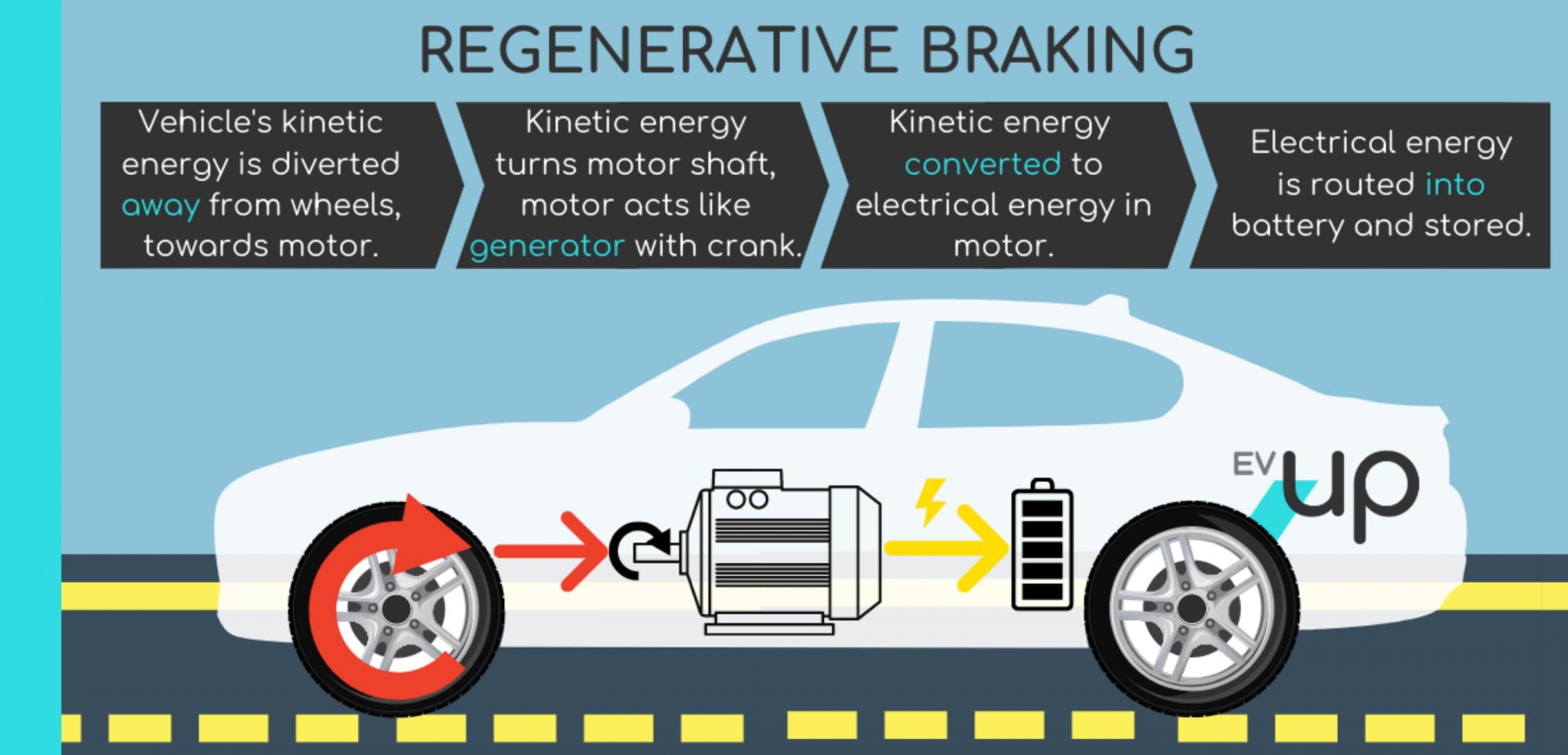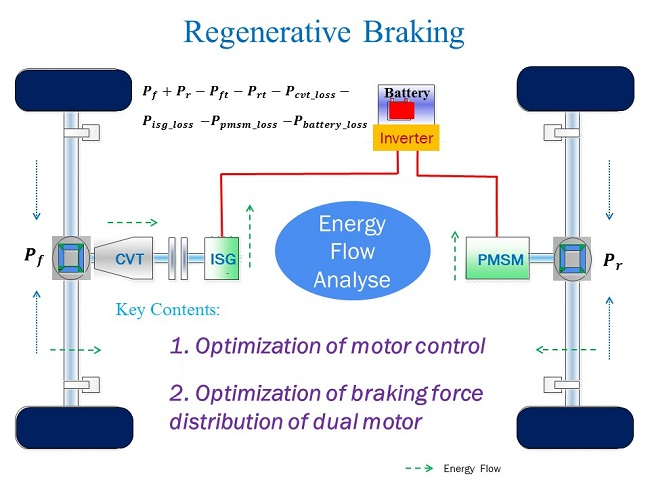Get ready for a deep dive into the innovative world of Electric Vehicles (EV). We’re revving up the conversation with the Chevrolet Bolt EV, not for its impressive electric range or rapid acceleration, but its regenerative braking system. This unsung hero of tech makes for a more efficient and exciting drive. Let’s hit the brakes and focus on how this system transforms the way we approach driving, energy conservation, and overall performance- a definite game changer. Buckle up, we’re shifting gears to braking technology like you’ve never seen before.
Table of Contents
The Concept of Regenerative Braking

Harnessing the law of physics that states every action has an equal and opposite reaction, regenerative braking makes brilliant use of the energy usually lost in heat when applying brakes in a vehicle. Now, that’s a witty flex of science, isn’t it?
With ordinary braking systems, energy transforms from kinetic to thermal when you hit the brakes. This thermal energy sources from friction between the brake components, creating heat that usually dissipates into the atmosphere as waste. And just like the blind spilling of your precious morning coffee on the subway, it’s a regrettable loss we’ve accepted with a shrug. We, the drivers, have long lamented this waste until regenerative braking kicked in.
In all its innovative glory, regenerative braking swoops in to capitalize on this wasted energy. Its modus operandi is simple yet elegant. Instead of dissipating this energy as heat, regenerative braking transforms it into electricity that powers the battery up. Sounds neat, right? Put simply, you’re using the braking energy to juice up your car’s battery.
Imagine this, in the avian world, this would compare to a bird constructing its nest from its own fallen feathers. So how exactly does this energy sorcery happen, you wonder?
In a car with regenerative braking, when you apply the brakes, the electric motor flips roles and works reversely as a generator. The kinetic energy that was propelling the car forward now turns the motor, generating electricity. This electricity, instead of being lost as heat, is funnelled back into the battery for later use. It’s almost like catching your own coffee spill in a cup before it hits the ground – only, in this case, the ‘ground’ is ‘heat’.
What makes regenerative brakes smarter is its level of interaction with the rest of the electric system. The throttle controller and the brake controller keep up continuous chit-chat, deciding when to use regenerative braking and when to employ traditional friction brakes. It’s like a bromance between two superheroes – Regen Man and Friction Dude – deciding who gets to play the hero based on the situation.
By turning a traditionally parasitic system into a symbiotic one, regenerative braking has certainly struck an evolutionary upgrade in automobile engineering. It’s fair to say that this innovation has us braking into the future. Perhaps, quietly so.
Regenerative Braking in Chevrolet Bolt EV

Now, let’s get serious about the regenerative braking system in the Bolt EV. As you sit in the driver’s seat of the Bolt EV, you notice a pair of steering-wheel-mounted paddle shifters. On a traditional gas-burning vehicle, you’d use these for manually shifting gears – but the Bolt EV only has one gear, so what on earth are these for? Friendly answer? Regenerative braking.
The concept is simple – when you let off the accelerator, the motor works in reverse, slowing the car and, mind you, feeding energy back into the battery pack. Chevrolet, with its admirable foresight, built this feature into the Bolt, and even threw in an option to crank it up a notch with the mentioned paddle shifters – giving you more regen-on-demand. So picture this: you’re cruising down the highway and off in the distance, you see traffic start to slow. Lift a finger, squeeze the paddle, and voilà! You slow down, regaining precious energy. Not only that, but the smart Chevy folks gave us ‘one-pedal driving‘, where you hardly need to use the brake pedal at all for stopping – just ease off the accelerator and the car slows down rapidly, again recharging the batteries. That’s the regenerative braking for you, in action!
And it’s not just about saving energy. Let’s talk about the thrill you can savor from this system. As you nail the throttle, the Bolt instantly shoots forward with the zeal of a caffeine-addled squirrel – that’s the 200 horsepower speaking. But lift your foot and the regen system ingeniously kicks in, gracefully hauling the Bolt back to slower speeds. It’s a refreshingly responsive experience, as if the car is reading your mind, instantly springing forward or slowing down based on how much pressure you put on the accelerator.
As a bonus, the sanity-saving aspect of this system can’t be overlooked. Heading down a mountain? No worries about overheating the brakes during descent – just dial up the regenerative braking and let the motor manage your speed while it refills the battery. There’s just something satisfying – ok, let’s say it, downright addictive – about pumping energy back into the car. Kind of like feeding coins into a slot machine-except here, you’re the house, and the house? It always wins.
Its remarkable how the regenerative braking in the Chevrolet Bolt EV delivers energy efficiency with such a regal charm, packing a punch while giving back to the battery. So with the Bolt, you don’t just brake – you REGENERATE!
Benefits of Regenerative Braking System
One of the compelling attributes of the Chevrolet Bolt’s regenerative braking system that immediately sets it apart from conventional brake setups is its efficiency. Instead of aimlessly dissipating energy as heat – as seen in conventional brakes, the regenerative brakes recapture and repurpose this energy. Essentially, it pours the automobile’s otherwise wasted inertia back into the car’s batteries. This recycling of energy leads to an extravagant gain in mileage, offering the Bolt EV the potential to stretch its driving range – a must-have feature for any electric vehicle aficionado. It’s like having a secret stash of power you just keep tapping into, whenever your battery needs a boost.
Now, let’s talk about the hands-on experience. Once you start testing and playing around with the ‘One Pedal Driving’ feature, you’ll realize the Bolt’s regen system is not just about efficiency. It radically changes the driving experience, particularly in the cityscape. With the max-regen mode enabled, lifting your foot off the accelerator initiates an immediate slowdown without even having to touch the brake pedal. This significantly reduces the constant pedal footwork in city driving—providing a smoother, less fatigue-inducing ride.
Moreover, wearing out of brake pads can be quite bothersome for drivers. But worry not. With the Bolt EV’s regenerative braking, not only do you get whiffs of fresh energy injected into your battery, but you also get to keep those pads and rotors for markedly longer than in a typical gasoline vehicle. The system, by nature, reduces the dependency on traditional braking, thus implying less wear and tear in the brakes.
Thus, the benefits of the regenerative braking system not only include increased efficiency and range but also an enhancement of the whole driving experience and a reduction in the upkeep of the vehicle. In essence, the Bolt EV, with its regenerative brakes, redefines how we approach driving—making it more economical, enjoyable, and sustainable.
Potential Issues with Regenerative Braking

While pumps and pistons are shooting high voltage like a technofuturistic version of card tricks, it won’t be much of a surprise that there might be a smattering of issues with regenerative braking. Like that one largely invisible pink elephant; “seamless transition”. Now, the Bolt EV, a torchbearer for Chevrolet, tries to make the transition between regenerative braking and conventional hydraulic braking as smooth as polished aluminum. But it’s not always a stroll in the wildflower meadow.
Perhaps the most evident issue emerges during hard braking. Braking from high speeds can sometimes create an abrupt transition as the vehicle shifts from regeneration to hydraulic braking, which is akin to suddenly finding out that your top speed on a rollercoaster goes from zero to a hundred.
Then, there’s the drop-off we’ve got to explore. Regenerative systems harness the most energy when you first start braking but as the car’s speed decreases, their effectiveness also drops off. As you approach a full stop, the mechanical brakes take over, and you may feel another bump in the ride, like a gear shift in a manual drivetrain. This inconsistent feel may puzzle drivers who aren’t regulars in the electric vehicle scene. Think of it like switching from stiff tap water to the fizziness of a ice-cold cola. It takes some acclimatizing.
And while we’re en route down this winding issue road, let’s pull over at the scenery of braking in varying weather conditions. In adverse conditions – say, a wet or icy road, regenerative brake systems can feel different and respond slower, as their efficiency is related to the traction of the car. A driver unfamiliar with this could find themselves flustered in already stressful situations.
To round off, regenerative braking could take you up the evolutionary ladder in terms of techno-sophistication, but they aren’t entirely free from potential hitches. Still, these are minor hiccups on your brook-to-ocean adventure, most of which can disappear with a little practice and familiarity. After all, aren’t we all just trying to make a little headway into the future? One regenerative brake press at a time.
FAQs
So, what’s the deal with the Chevrolet Bolt EV’s Regenerative Braking System?
Is this braking system any good during rush hour?
Can the system drastically improve the electric range?
Conclusion
The Chevrolet Bolt EV’s regenerative braking system turns out to be a dramatic departure from traditional braking. It’s a clean, intuitive feature that enhances the user experience, contributing much to the car’s overall efficiency. By blending eco-friendly practices with advanced technology, Chevy successfully pushes the envelope in terms of driving dynamics and environmental sustainability. Ultimately, the Bolt isn’t just an EV; it’s a glimpse into the future of automotive innovation.
